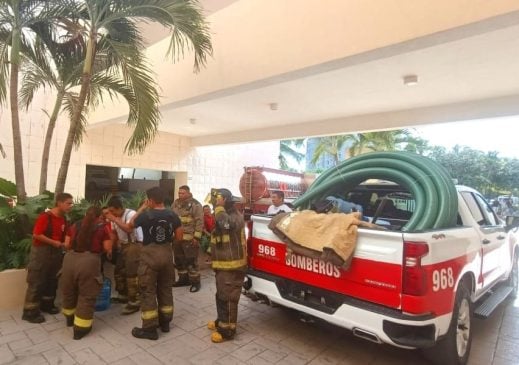Cancun, Q.R. — The Ministry of Infrastructure, Communications and Transportation (SICT) says they are carrying out the largest environmental remediation program in its history. The remediation program is part of the construction of the Nichupte Vehicular Bridge in Cancun.
According to the SICT (Secretaría de Infraestructura, Comunicaciones y Transportes), the initiative includes the restoration of 306 hectares of mangroves with the goal of ensuring the project’s sustainability.
The project has an Environmental Impact Statement (EIS) authorized by the Ministry of Environment and Natural Resources (Semarnat) which establishes the implementation of 10 conservation programs under the principle of “zero rate” for mangrove cover loss.
The construction covers an area of just four hectares, demonstrating the SICT’s technically and environmentally responsible approach.
Led by Jesús Antonio Esteva Medina, the SICT reaffirms its commitment to the environment during the execution of this 11.2 kilometer infrastructure project, which will cross the Nichupte Lagoon to connect Cancun’s Hotel Zone with Colosio Boulevard and Tulum, Kabah, and Bonampak Avenues.
Through an adaptive environmental management system, the project’s impacts are expected to be prevented, mitigated and offset, ensuring a balance between development and conservation, the SICT said.

To comply with established environmental measures, the SICT and the construction companies responsible for the project are implementing the following 10 specialized programs:
Environmental monitoring and management
Integrated vegetation management
Comprehensive wildlife management
Comprehensive waste management
Environmental monitoring (bird and crocodile subprograms)
Pilot program for the recovery of seagrasses
Environmental rehabilitation and improvement in mangrove areas
Social management program
External environmental monitoring program
Safety and environmental contingency response program in mangrove areas
One of the most representative examples is the canalization in the northern zone, which covers approximately 75 hectares of mangroves. Before intervening in the area, a thorough study was conducted to identify its ecological needs. As a result, it was decided to open channels to allow water inflow, facilitating the cleanup and subsequent natural recovery of the ecosystem, they explained.

In addition, innovative techniques have been implemented to restore seagrass meadows, resulting in the recovery of 108 hectares, 59 in the northern zone and 49 in the central zone, that were previously fragmented.
Regarding birdlife, monitoring has identified 249 species present in the Nichupte lagoon, 32 of which are classified as having some protection status according to NOM-059-SEMARNAT-2010.
Likewise, 954 wildlife individuals belonging to 42 species and 822 marine life belonging to 30 species have been relocated. In the specific case of the crocodile, 1,627 sightings have been recorded with an estimated population of 74 individuals.
A hydrodynamic study of the Nichupte lagoon system was also conducted to identify strategic areas where hydrological flow could be restored by opening channels, thereby promoting the rehabilitation of degraded mangroves, the federal agency reported Friday.

The Nichupte bridge will be a modern infrastructure that will not only coexist harmoniously with nature, but will also provide an alternative evacuation route for the hotel zone in the event of emergencies or natural disasters.



